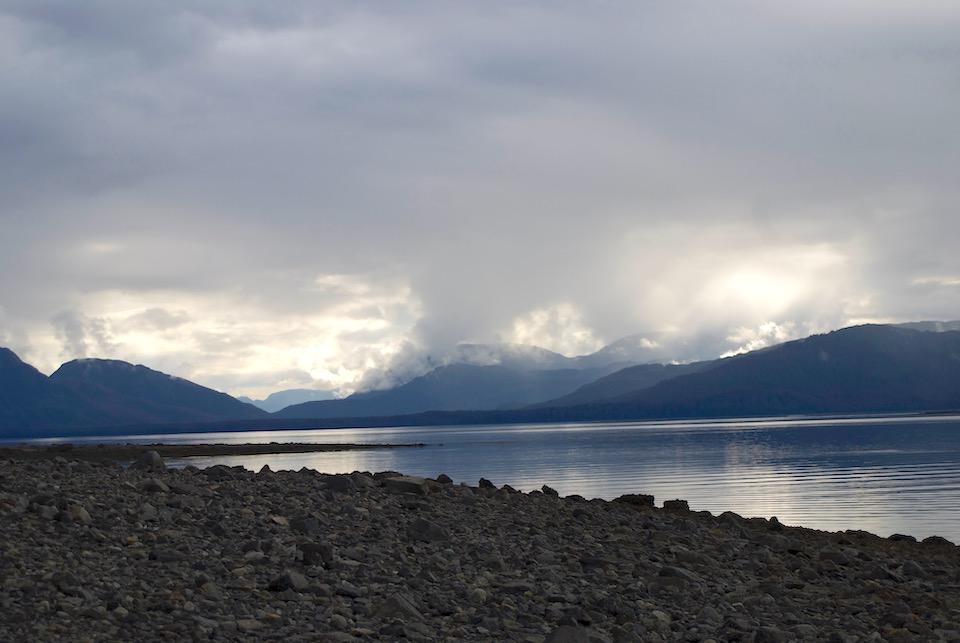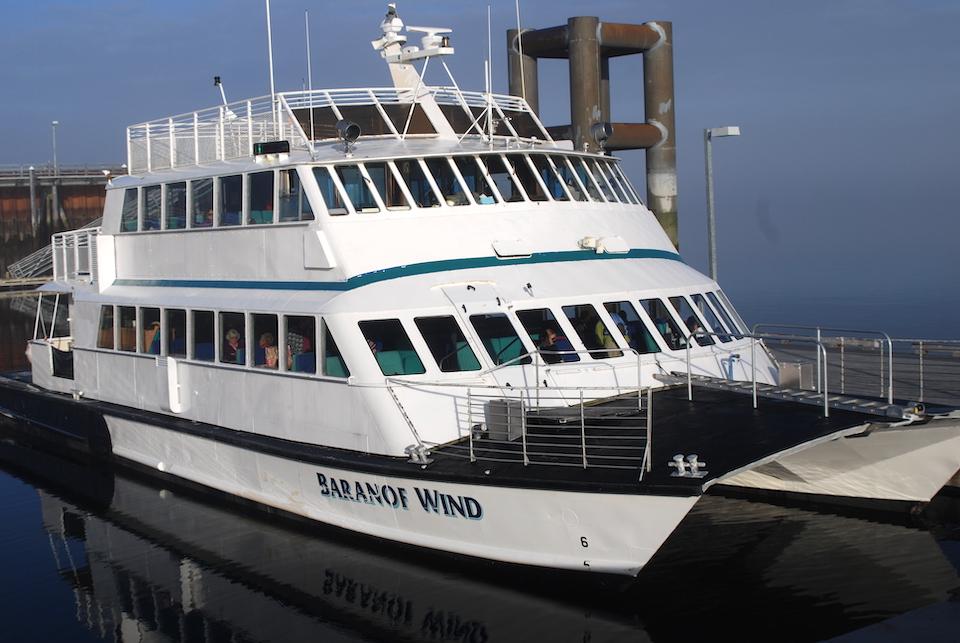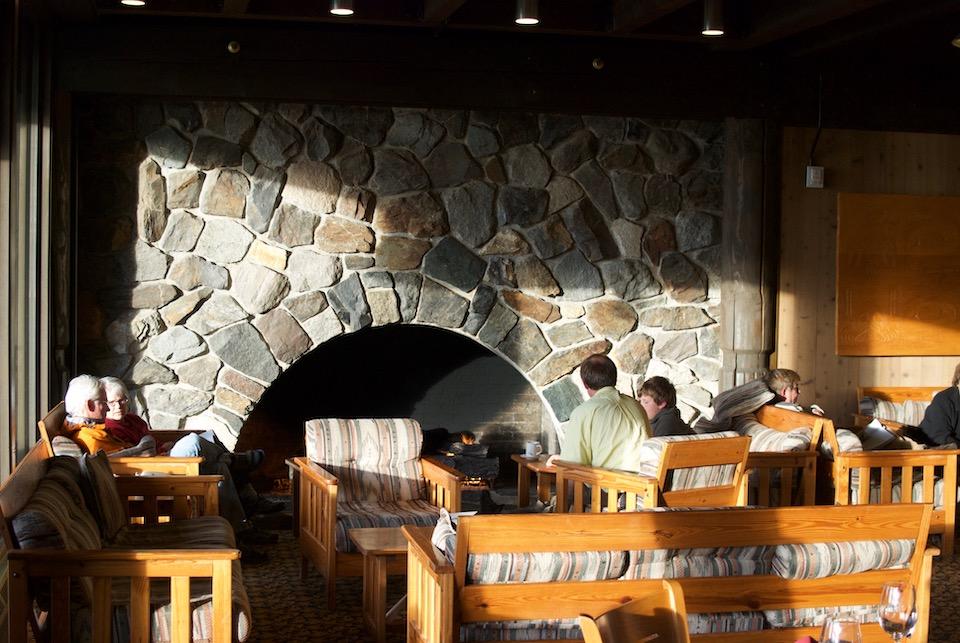
The National Park Service is working on a plan to make a visit to Glacier Bay Lodge in Glacier Bay National Park and Preserve more enticing for longer stays/Kurt Repanshek file shot of Bartlett Cove
Most visitors to Glacier Bay National Park and Preserve in Alaska either make a tour of the iconic bay on a cruise ship, or come to the lodge at Gustavus to take a day trip up the bay on a concessionaire's ship before heading somewhere else the next day. A management plan for the park's "frontcountry" is intended to entice visitors to stick around a little longer.
There currently is relatively little for guests at the Glacier Bay Lodge to do. While the park and preserve count more than 3 million acres, the developed footprint at Bartlett Cove is quite small, providing space for the lodge, visitors center, a dock, and a few short trails.
The Forest Loop Trail is a short, easy walk near the lodge at Bartlett Cove. It covers a mile of scenic rain forest and a bit of the shoreline. The route is a regular choice for a ranger-guided walk during the summer season, or you can easily make the trip on your own.
The Bartlett River Trail covers four miles, roundtrip, as it meanders along an intertidal lagoon and through the spruce/hemlock forest before emerging and ending at the Bartlett River estuary.
The Bartlett Lake Trail runs eight miles roundtrip, and starts out on the Bartlett River Trail. About a quarter-mile down the trail the lake trail branches off and begins to climb the moraine. This trail is less maintained than the other trails so use caution to not lose the route.
Lastly, there's the Beach Trail, which covers about a mile. The long stretch of shoreline south of the cove's dock allows for a pleasant stroll. Low tide reveals a myriad of intertidal life. It’s a terrific place to see land, shore and sea birds.

Most guests come to Glacier Bay Lodge to enjoy a boat cruise up Glacier Bay on the Baranof Wind/Kurt Repanshek file
According to the park's recently released draft Frontcountry Management Plan for the Bartlett Cove area, just 35 percent of the visitor groups spent a day or two at the park, and 33 percent spent less than a day.
The park's proposed frontcountry plan aims to change the visitor experience, "so that the frontcountry becomes a welcoming destination that strengthens visitors’ connections to larger park purposes."
"Bartlett Cove would function more like a traditional national park frontcountry where visitors can 'Find their Park' and be inspired by the features, processes, stories, and attributes associated with the national significance of Glacier Bay—whether or not they are able to explore farther into the backcountry," the park's planning documents say. "The National Park Service would continue to provide the foundational services to access the backcountry, but would further expand its facilities, operations, and programming to engage broader audiences in the frontcountry for longer periods and to offer more accessible and condensed experiences of park resources and values."
Part of the plan calls for expansion of the trail system around the lodge, restorations to the historic lodge, and new visitor-oriented upgrades.
"The economic viability of the lodge would be addressed by broadening its range of accommodations and hospitality options and by strategic partnerships to strengthen occupancy," the documents say. "Finally, the National Park Service would seek to strengthen local tourism benefits and enhance visitor opportunities by defining the level of involvement and processes to collaborate with tribal, gateway community, private, and other entities."
For those who stay in the park, the Glacier Bay Lodge, built in 1966 as part of the Park Service's Mission 66 initiative, at Bartlett Cove is the only accommodation. Open from Memorial Day to Labor Day, it has 48 guest cabins, a restaurant, gift shop, lounge, and contains the park's visitors' center. The management plan calls for investments in the property to make it more enticing for longer stays. Currently occupancy rates range from 66 percent to 75 percent, according to the concessionaire.

The draft management plan calls for restoration and improvements to Glacier Bay Lodge/Kurt Repanshek file
Among the ideas being proposed is one to create four-to-six "upscale room offerings," possibly by combining two cabins to make one larger accommodation, possibly with a hot tub. Another idea calls for building or remodeling some lodge rooms "as insulated bunk rooms or minimalist offerings with a kitchenette that can be used year-round."
The Park Service also is proposing to make the lodge concession more profitable by:
* Leveraging "shore-based frontcountry excursions, trips into the bay, non-park activities, and services provided by the NPS and partners to support the lodge’s functioning as a base for a compelling, competitive multi-day experience;"
* Adjusting the lodge's "offerings, products, and prices to improve the profitability and appeal of the Glacier Bay Lodge experience;"
* Improve visitor occupancy to make longer stays more attractive and possible, and;
* Exploring ways to provide a more diverse food service.
The plan also calls for improving the hiking experience around Bartlett Cove, in part by creating and maintaining "quality viewscapes from land to water in key trail locations that interpret the post-glacial changing landscape and park resources. Add benches where appropriate, and design with wide spots for group gathering and other approaches that focus pedestrian traffic to reduce social trailing."
New trails also are called for in the document.
A new approach to bay excursions also is envisioned "to provide leisurely, sensory-focused boat tours for whale and wildlife watching that are 1/2 day or shorter, and focus on understanding the science of productivity in lower Glacier Bay." More kayak rental opportunities at Bartlett Cove, as well as paddleboard rentals, also are being considered, but away from the historic district.
Public comment on the plan is being taken through May 8. You can find the plan, and leave your comments, at this page.



Comments
These proposed 'improvements' sound expensive to build and maintain, especially in such a remote location near a major fault zone with tsunami risk. Wouldn't "further expand[ing] its facilities, operations, and programming" require increased staff as well? This 2017 report claimed almost ten million dollars in deferred maintenance at Glacier Bay:
https://www.nps.gov/subjects/infrastructure/upload/FY17-NPS-Deferred-Mai...
There seems some kind of fundamental disconnect from reality in NPS top management when new development is almost always a higher priority than taking care of what they have.
There is plenty to do in Bartlett Cove. I run tours there which are gaining in popularity.
https://www.glacierbayphototours.com/
Glacier Bay is one of the most impressively managed National Parks I've encountered. It's great to hear they plan to expand the limited hiking trails around Bartlett Cove.
I would suggest that the idea of adding any hot tube opportunities, a suggestion included in the plan document, should be taken as emblematic of the kind of investment that should never occur in any national park. Please stay with beautiful trails, opportunities to take short boat tours, even a wider range of food options. More, perhaps special topic ranger/naturalist led walks, of varied length could be a good addition to bring a measure of visitor understanding of the front country environment that is currently not being addressed in a focused way.
Please avoid "upscale" housing upgrades. Quality is just fine, but no attempt at any luxury accommodations should be part of a national park lodge. Well run hostel accommodations could be a good addition. I suggest the park service work with the local community to provide services and visitor opportunities.
We loved how unsettled the entire area is, including "booming downtown Gustavus". We were able to get all of our __needs__ satisfied, and it was ok that not all __wants__ were readily available. Such a beautiful area, I only wish we had more time for getting about in the local scenery.
It seems there's ample opportunities for postive upgrades to Bartlett Cove and equally as many ways to really change and even exploit this pristine area. Glacier Bay is an incredible wilderness and the setting in Bartlett Cove will influence the experience of this truely special place. Don't forget to also include your comments publically! Click "Comment Now" here: https://parkplanning.nps.gov/document.cfm?parkID=12&projectID=65312&docu...
"And so we arrive in Glacier Bay, a land reborn, a world returning to life, a living lesson in resilience. If ever we needed a place to intrigue and inspire us, to help us see all that's possbile in nature and in ourselves, this is it." - Glacier Bay Park Map